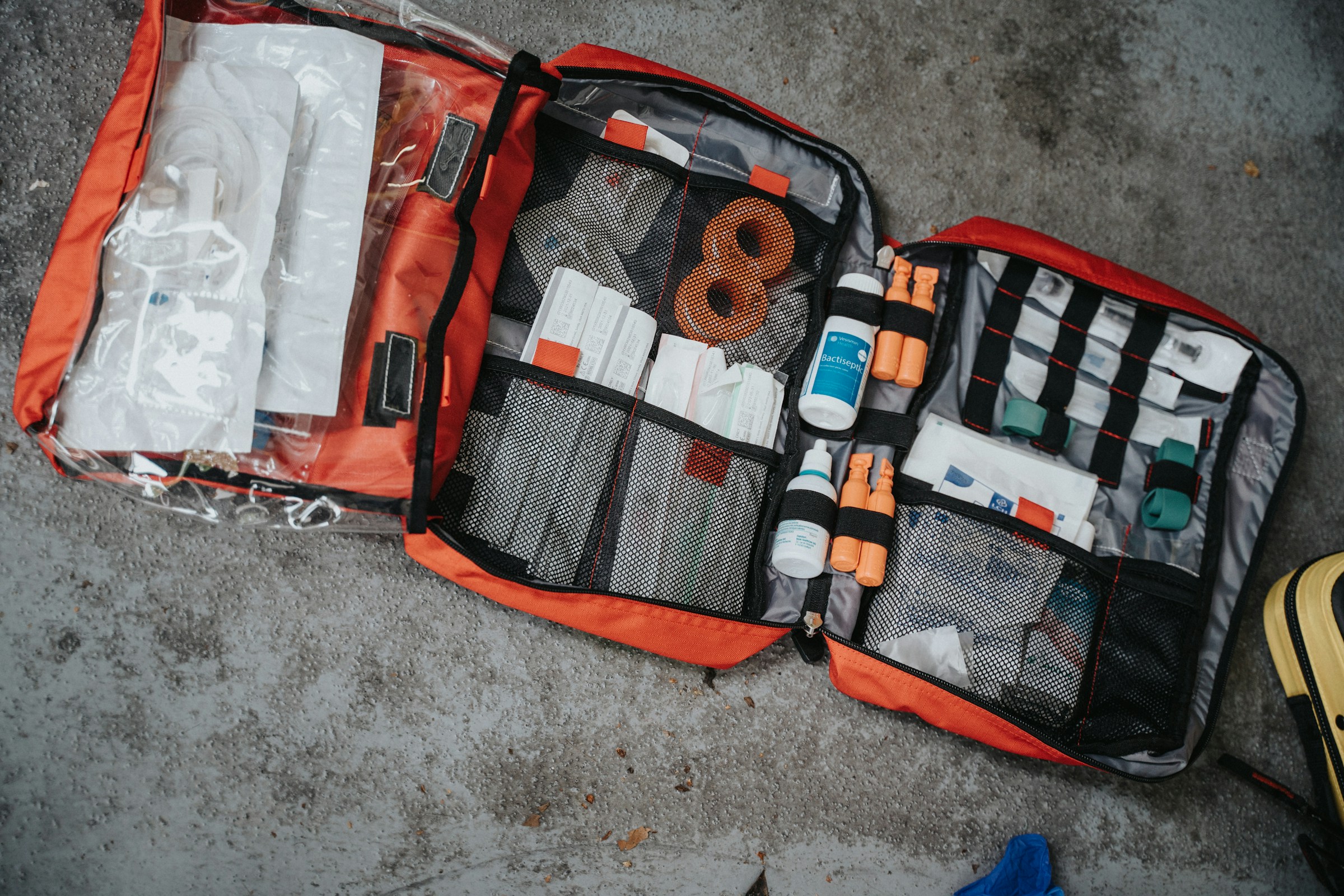How to Travel Internationally for the First Time: A Beginner’s Guide to Going Abroad
Empty Nesters, Family Vacations, First Time Travelers, Multigenerational Vacations, solo female traveler, Travel Guide, Travel Tips
July 10, 2025
Are you ready to pack your bags and take on the world, but not quite sure where to start? If you’re wondering how to travel internationally for the first time, you’re not alone. But you’re in the right place, because my beginner international travel guide will walk you through everything you need to know before your first big adventure abroad. From securing the essential documents for international travel to understanding how to prepare for international travel like a pro, I’ve got you covered. Get ready to step outside your comfort zone and into a journey that will change your life.
How to Travel Internationally for the First Time: A Beginner’s Guide to Going Abroad
Start with a Solid Travel Plan When Learning How to Travel Internationally for the First Time

If you’re wondering how to travel internationally for the first time, your very first step is to choose a destination that sets you up for success instead of stress. Sure, they say the world is your oyster. However, not every country is ideal for beginners.
I recommend choosing a destination that matches your comfort level. There are plenty of countries that are safe, easy to navigate, and have English-speaking locals. Consider Ireland, Portugal, Japan, or New Zealand for your first vacation abroad.
This is also the time to determine the length of your international vacation. It is usually best to plan on staying seven to ten days for your first international trip. You won’t burn out like you would if you had chosen a three-week trip. And yet, you would still have plenty of time to get over jet lag, explore the sights, and absorb a new culture.
Oh, I also recommend choosing the time of year you visit carefully. Shoulder seasons are best for first-time international travelers like yourself. There are fewer crowds to deal with, as you are trying to navigate from attraction to attraction.
Make Sure Your Passport and Visa are in Order
When you’re planning your first internation trip, your passport is your golden ticket. And your visa might be the permission slip a country requires for you to enter. Missing one of these items could mean being denied boarding at the airport. Or even worse, you could be turned away at the border after a very long flight.
Let’s make sure you’re ready with the essential documents for international travel.
Passport for First Time International Traveler
When I am asked how to prepare for international travel, my first response is always going to include a question about a person’s passport. You see, when you are traveling internationally, your passport must be valid for at least six months after your return date. You will also need at least one or two blank pages in your passport for entry stamps.
If a passport is expiring, or a person doesn’t have enough pages left for entry stamps, renewal is necessary.
Now, since I am talking about traveling internationally for the first time today, I am going to assume you don’t have a passport yet. In this case, you will need to apply for one.
Since you are a first-time applicant, you must apply in person. Simply fill out the application on this page. Bring a printed copy of your application, as well as a passport photo, government-issued identification, and proof of citizenship to your local passport acceptance facility.
Visa
Now that you are well on your way to getting your first passport, we need to talk about visas. Some countries require you to obtain a visa before arriving at your destination. Others do not.
If you need a traditional visa, you will need to apply for one in person at the consulate or embassy. An eVisa is much easier, because you can apply for those online.
As for obtaining a visa upon arrival, those are given when you arrive at the airport or border crossing of your destination.
Don’t worry, I can help you determine whether you will need a visa, if I plan your international vacation.
Other Essential Documents for International Travel
When you arrive at your destination, it is important you have the following documents:
- Proof of return travel
- Hotel confirmations
- Proof of Travel Insurance
- Vaccination certificates – this is dependent on the country and region
Check out 10 things to know before your next international vacation.
Book Smarter When Learning How to Travel Internationally for the First Time
When you are traveling internationally for the first time, it can be overwhelming to book the flights, hotels, and transportation. As an expert travel advisor, I can tackle all your reservations for you, so you don’t need to worry about all the small details I will be sharing next.
International Flights
When it is time to book your international flights, you must keep a few things in mind. First, make sure you book flights with longer layovers. The last thing you need is to book a flight with a short layover and then miss your next flight, because you are unaware of how to get to your next gate.
Your arrival time at your destination is another major factor. Reaching your destination at midnight is going to be very intimidating. I recommend booking a red eye flight, so you reach your destination in the morning. It’s a win-win, because you can sleep on the flight and see your new destination in the daylight.
Hotels

You may be tempted to book the first five-star hotel you find for your first international vacation. However, that could be the worst thing you could do, because it might not be in a safe area!
It is better to book a hotel in a central, well-reviewed area. Your hotel should also be close to public transportation, restaurants, and the attractions you want to see.
Try these international foods during your vacation.
Local Transportation
As you are preparing for international travel, make sure you consider your local transportation options. Most of the time, your options will be trains, the metro, buses, taxis, and renting a car.
I can help you determine which transportation option will be best for your international vacation. If I am the one planning your vacation, I will also make sure your airport transfers are reserved in advance. This will ensure you are not spending more time at the airport when you arrive than you need to.
And if you are renting a car for your trip, it is better to research local driving rules before your trip. This will ensure you know which side of the road you are driving on and so much more.
I also recommend downloading apps like Google Maps offline prior to your departure. Apps like these can be quite helpful if you get turned around while on vacation. Even if you are not driving.
Learn the Basics About Your Destination as a First Time International Traveler
Need to know how to travel internationally for the first time? Start by doing a little homework! Learning a few essential details about your destination before takeoff will help you navigate daily life abroad.
Culture and Customs
Learning the local etiquette can be helpful. Know how to greet the locals appropriately. Dress like the locals. Or at least cover-up as needed at attractions and in restaurants. Use the appropriate table manners at meals.
Local laws at your destination may be quite different to what you are used to. Public displays of affection are frowned upon in some countries. And you can’t chew gum in Singapore.
Learning about a country’s religion can help you understand closures, holidays, and even special celebrations taking place during your visit.
Local Language
Even if you choose to visit a country where many of the locals speak English, it is still an excellent idea to learn a few phrases in the local language. Start small with hello, goodbye, please, and thank you. Then work on phrases like where is the bathroom.
Local Currency
Paying for taxis, meals, and souvenirs will be much easier if you understand the local currency of your destination. First, find out the name of the currency and the conversion rate. Then see if cash is needed or if you can use your credit card to pay for most of your purchases. Using a credit card is easiest, because you don’t need to fumble with counting foreign money.
Nearby Attractions
Learning where nearby attractions, restaurants, stores, and pharmacies are located can be helpful when you arrive at your destination.
Pack Like a Pro as a First Time International Traveler

Packing for your first international trip can feel like preparing for every possible scenario. You’re going to be thinking about rain, special occasions, snow, wind, and cold and warm temperatures.
Let me help you take the guesswork out of packing. Here’s how to pack smart, stay light, and bring exactly what you need for your trip abroad.
The Essentials
Remember, when traveling, less is more. Especially once you realize you need to haul your suitcase through airports, streets, and up the stairs in some hotels.
Here is what you must pack:
- Versatile clothing
- Comfortable walking shoes
- Weather specific items like umbrellas, swimsuits, and hats
- Sleepwear, undergarments, and socks
What to Pack in Your Carry-On as a First Time International Traveler
- Passport, wallet, and essential documents for international travel
- Medications
- A change of clothes
- Snacks, refillable water bottle, and travel pillow
- Phone, charger, and portable power bank
- Noise-cancelling headphones or earplugs
Don’t Forget These Tech Items
Tech packing mistakes can leave you powerless when traveling internationally. Don’t forget to pack these items:
- Universal power adapter
- Voltage converter
- Portable power bank
What Not to Pack for Your International Vacation
You should never pack these items when traveling internationally:
- Full-size toiletries
- Too many pairs of shoes
- Valuables
- Just in case items – If it is something you can purchase “if you need it”, leave it home!
Organize All Your Important Documents as a First Time International Traveler
When it comes to how to travel internationally for the first time, there’s one thing that should always be within arm’s reach. And that is all your travel documents. From boarding gates to border control, having your essential documents for international travel organized and accessible can make the difference between smooth sailing and full-blown panic.
Must-Have Travel Documents
- Passport
- Visa – if applicable
- Flight confirmation and boarding passes
- Hotel reservations
- Travel insurance policy
- Transportation passes
- Vaccination records – if applicable
- Emergency contact list
- Credit cards and local currency
You can easily keep all this information within a folder or travel wallet. I recommend keeping it in something that is easy for you to use, so you don’t panic when you go to find something you need.
I also recommend keeping digital copies of all your must-have travel documents. This will ensure you can access any of them if something happens to a physical copy.
Stay Safe and Healthy While Abroad

Exploring a new country is exciting. However, staying safe and healthy is what keeps the excitement from turning into an emergency. Here’s how to protect your well-being without losing out on the fun.
Pack a Mini First Aid Kit
You should always have access to the basics when you’re not feeling well or have a minor injury. Packing a first aid kit can be helpful in so many ways when you’re traveling internationally.
Include the following in your first aid kit:
- Prescription medications
- Antihistamines
- Pain relievers
- Electrolyte tablets
- Cold medicine and cough drops
- Band-aids
- Antibacterial wipes
- Motion sickness tablets
- Tweezers and nail clippers
Stay Street Smart and Aware
Staying safe while abroad always comes down to trusting your instincts and not being flashy.
My tips for staying safe while traveling include:
- Don’t wear expensive jewelry or wave money around
- Use a crossbody bag or money belt to keep your essential items close
- Avoid dark, empty streets at night
- Ask an employee at the front desk of your hotel which areas are safe and which ones you need to avoid
Know What to Do in an Emergency
No one ever wants an emergency to happen while they are traveling. But I always say it is better to be prepared for one and not need the information than to not be prepared and need it.
You should always learn the local emergency number for the destination you are visiting. Your essential documents for international travel should include your country’s embassy or consulate contact information.
When you are doing your research to see where all the attractions are located, take the time to find the nearest hospital.
And my last tip for emergencies is to make sure your travel insurance covers emergency medical services, trip interruption or cancellation, and lost luggage.
Understanding Technology for Travel as a First Time International Traveler
You must be prepared for technology to work a little differently when you are traveling to a different country. Today, I am sharing how to prepare your devices in advance in this section of my beginner international travel guide.
Stay Connected
Staying connected while overseas is as simple as choosing between an international roaming plan, local SIM card, eSIM, or utilizing local Wi-Fi. International roaming plans are the easiest to use, but they can be quite expensive. I recommend checking with your phone provider prior to your departure to check pricing options.
A local SIM card offers cheap options for staying connected. However, your phone must be unlocked to use one. And you might need to swap SIM cards in the middle of your trip.
An eSIM can be downloaded prior to your trip, so you can stay connected as soon as you land. There are a few different options available. However, Airalo and Holafly are two of the top choices.
Wi-Fi might seem like a good choice for your travel needs. Especially if you only plan on contacting people when you are at hotels, cafes, and airports. However, it won’t be helpful in an emergency.
Phone Adapters and Converters
Universal travel adapters are necessary when traveling internationally. Europe, Asia, and Australia all use different outlets. You will need to choose the adapter that will work for the destination you are visiting.
A voltage converter may also be necessary for your international vacation. These converters are needed for hair dryers, curling irons, and electric razors in countries where the voltage is 220V instead of 110V like we have here in the US.
Must-Have Travel Apps for First-Time International Travelers
A few days before your international vacation is an excellent time to download and check out certain travel apps. The ones I recommend include:
- Google Translate
- Google Maps
- Currency Converter
- Uber or local ride apps
- Rome2Rio
- Airline apps
Airport Tips for First Time International Travelers

Departure day is going to be an exciting time for you! But it’s also going to feel intimidating, as you try to navigate new areas of the airport. Don’t worry, I’ll have you strutting through the airport like a pro in no time at all!
Arrive Early
When traveling internationally, it is best to arrive three hours before your flight. This ensures you can navigate the long lines.
I recommend accounting for other possible delays like traffic, parking, and shuttle service.
While you shouldn’t stress if you arrive two hours and forty-five minutes prior to your flight, you need to be aware that most check-ins for international flights close one hour before departure.
Learn how to avoid airport crowds.
Understand the Check-In Process
It is best to take advantage of online check-in. This is often available twenty-four hours before your departure time. If you don’t check-in online, go to the international counter when you arrive at the airport.
At the airport, drop your bags, get your boarding pass, and head to security.
Go Through Security Like a Pro When Learning How to Travel Internationally for the First Time
There is a routine you must follow when going through security at the airport. You will need to remove your shoes and belt, as well as your laptop and any liquids you have packed in your carry-on bag. Your pockets will need to be empty too.
You will need your passport and boarding passes, so keep them easily available.
Don’t Panic at Passport Control or Customs
It can be really easy to start panicking when you reach passport control or customs. Especially when they are asking how long you’re staying, where you’re staying, and the purpose of your visit.
Just answer the questions confidently and honestly. It’s all routine.
Use Your Airport Time Wisely
Using your airport time wisely is necessary whether you’re traveling domestically or internationally. This is the time to charge your devices. Download any entertainment options or books. And refill your water bottle and purchase snacks for the plane.
Check out the US airports with the best food.
What to Expect Upon Arrival
Once you land at your destination, you’ll go through passport control and customs. You’ll need to show your passport and other requested documents.
Once you have cleared those areas, it will be time to collect your checked bags.
Embrace the Experience
Now that you’ve planned, packed, prepped, and passed through airport security, it is time to embrace your travel experience. All of it. Even the slightly awkward, mildly confusing, and hilariously off-script parts.
Accept that Things May Go “Wrong” When Learning How to Travel Internationally for the First Time
A few things may go “wrong” when you are traveling. You may order something unrecognizable during dinner. You may get lost finding your hotel.
I want you to remember that something going “wrong” is not failing at travel. It is travel.
I guarantee these missteps will be the stories you will be telling over and over again in the future. And you will laugh every time!
Capture Your Journey
You are never going to have a first international journey ever again. So, capture it all in photos and a journal. Keep receipts, ticket stubs, and maps to create a scrapbook.
Connect with People
I don’t expect you to become best friends with the people you meet when you are on your international vacation. However, connecting with them will lead to unexpected adventures you will remember forever.
And you never know. You may end up with a lifelong friendship or two!
So, how to travel internationally for the first time? It’s a mix of smart planning, thoughtful preparation, and a willingness to embrace the unknown. From organizing your essential documents for international travel and learning how to prepare for international travel like a pro, to packing smart and navigating foreign airports. You’re not just checking boxes. You’re building confidence with every step.
Will there be minutes when you feel out of your comfort zone? Absolutely. But that’s the beauty of travel. It pushes you. Surprises you. And then rewards you with views, flavors, friendships, and stories you never could’ve imagined.
Remember, every seasoned traveler started exactly where you are now. They were full of questions, excitement, and a dash of nervous energy. You may be the same way now, but you’ve got this!
Are you ready to start implementing what you have learned about how to travel internationally for the first time?
If you said yes, I would like to invite you to click here to schedule a personalized consultation with me. Clicking the link will take you directly to my digital calendar to schedule a time that is convenient for you.
Not ready to start planning your international vacation just yet? Sign up for my newsletter and continue to receive all the travel information I share.
Enter your Name and best Email Address to receive
On Your Next Family Vacation
We respect your privacy and will never share or sell your information.
3 Ways to See It All in Alaska
On Your Next Family Vacation
Click here for 10 Exciting Family Adventures
You Can Plan
NOW
3 Ways to See It All in Alaska
COPYRIGHT © ELITE TRAVEL JOURNEYS 2023
Explore
& More
ABOUT
TERMS And CONDITIONS
FAMILY ADVENTURES
PLANNING PROCESS
IN THE MEDIA
CONTACT
FREE RESOURCES
FAQS
PRIVACY POLICY
CUSTOMER DISCLOSURE
Elite Travel Journeys, Inc. is registered with the state of California as a Seller of Travel - Registration #: 2143950-40
Elite Travel Journeys, Inc. is registered with the state of Florida as a Seller of Travel. Registration No. ST43207
BLOG
HOME